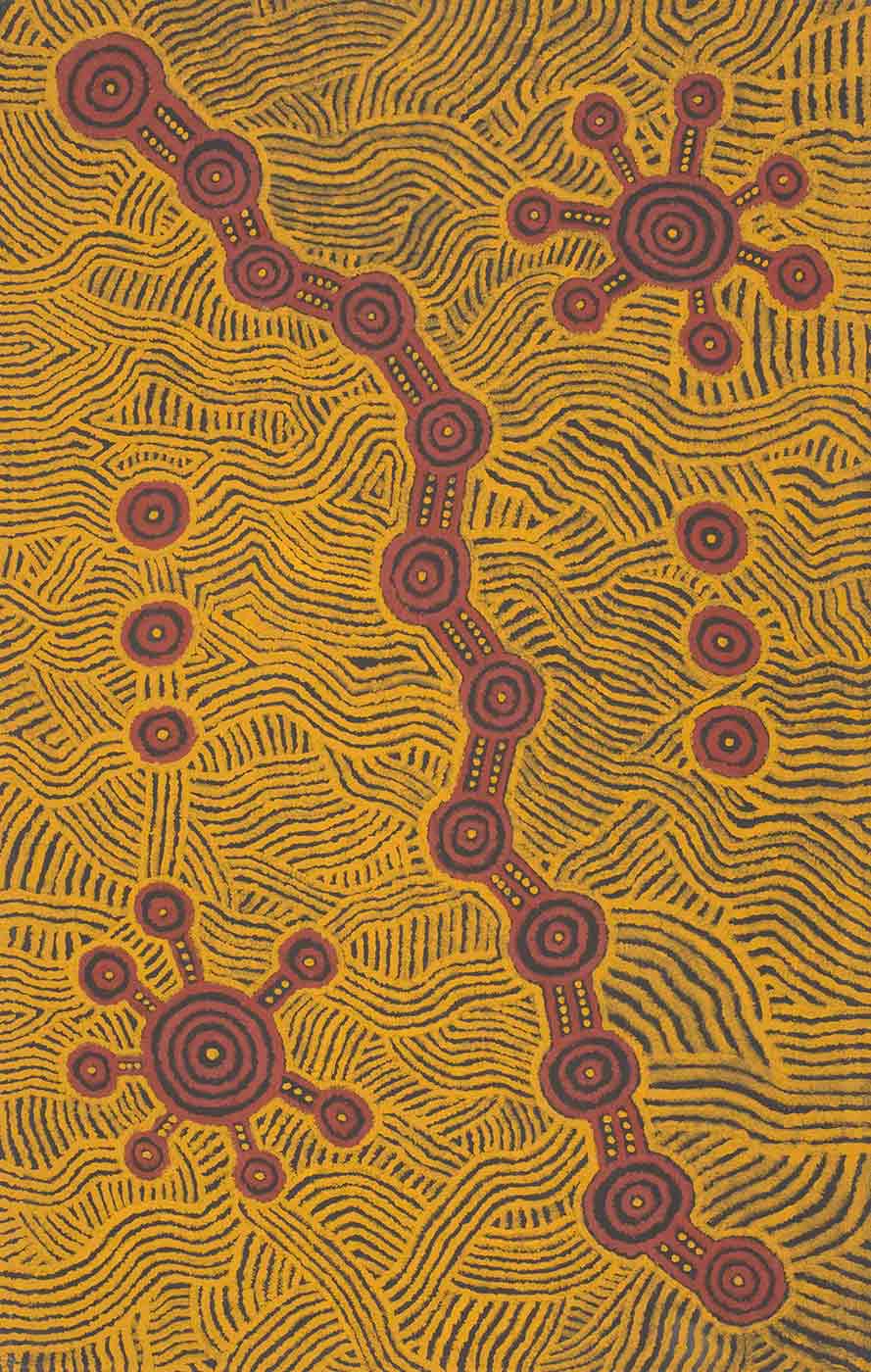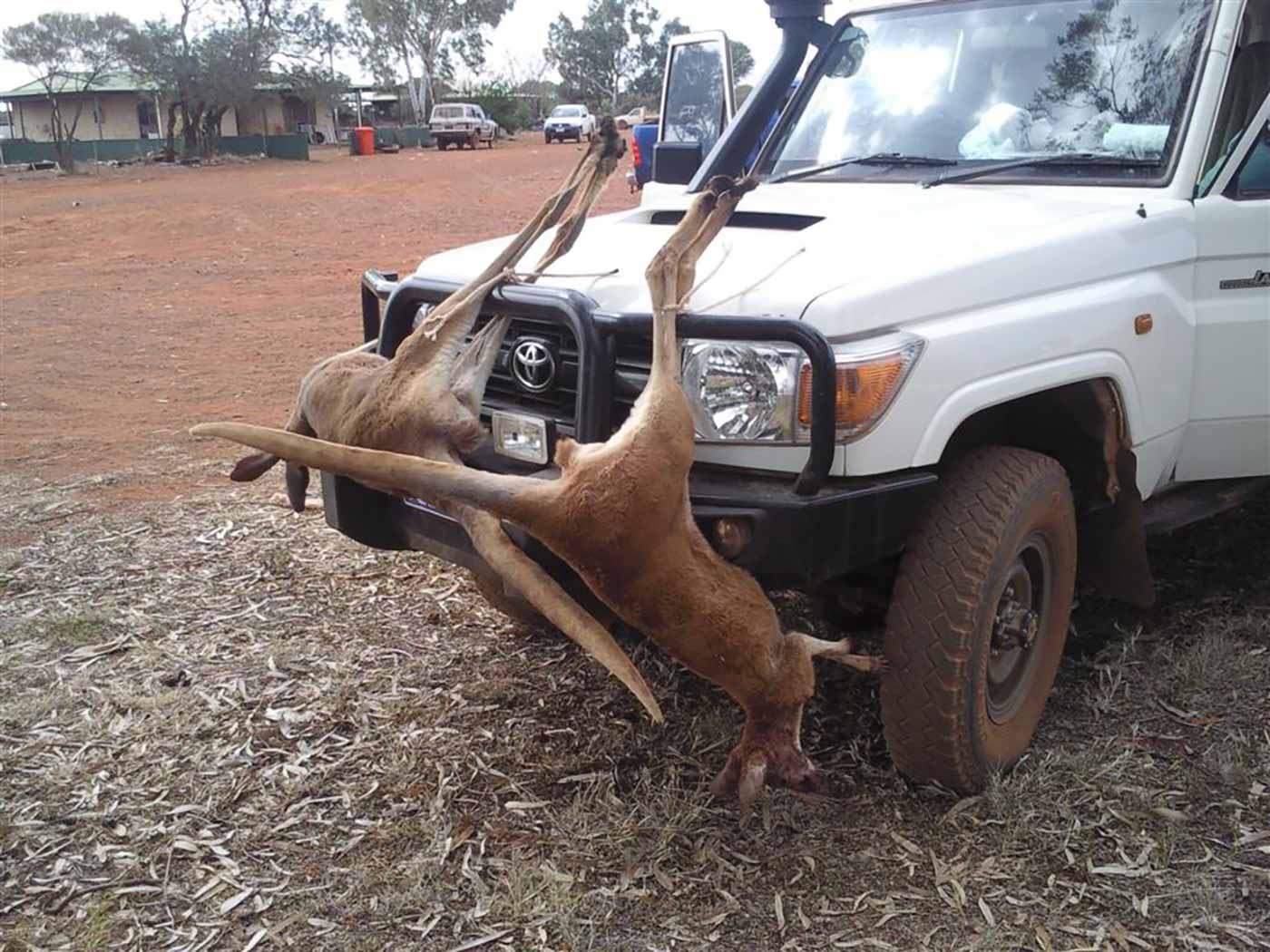Beef and bush tucker
The town and district of Wiluna lie at the edge of the Western Desert, near the centre of Western Australia. Gold miners built Wiluna in the 1890s, in the traditional territory of the Tjupany people.
The Canning Stock Route, established early in the 20th century to bring beef cattle from the East Kimberley region to Perth, ends at Wiluna.
Canning Stock Route

Early in the 20th century a mining boom in Western Australia bolstered the state’s population and forced a rise in beef prices.
The state government decided to make a stock route through the Western Desert to bring cattle from the East Kimberley region to Wiluna, then onto Perth.
Surveyor Alfred Canning was appointed to forge a path through 1850 kilometres of desert.
Canning visited Wiluna on his journey north. There he acquired a police chain and handcuffs to capture Aboriginal people who could identify water sources along the way.
Traditional waters
Most of the water sources along the Canning Stock Route were wells and pools that were carefully tended by Martu, the people of the Western Desert.
Construction of the route involved the deepening of existing wells and the sinking of new wells, which made it hard for Martu to access their traditional waters.
When drovers first brought beef cattle down the stock route to feed the growing population of the south-west, Martu attacked and killed the drovers. In response, the Western Australian Government sent police who shot dead at least 10 people.
In Blood on the Ground, Wiluna artist Clifford Brooks recorded a story told by his father Charlie. When Charlie was young, his little brother was taken north along the stock route by drovers. Charlie went looking for his brother, but instead found a horrific scene, the dead bodies of Martu men, women and children, shot dead by drovers or police.
Leaving the desert

The establishment of cattle stations, the Canning Stock Route, and small towns like Wiluna transformed the lives of Martu people across the Western Desert.
Cattle fouled waterholes and devoured a range of plants that people relied upon for their edible seeds and fruits.
The family of artist Dadina Georgina Brown were some of the last Martu in the wider Wiluna region to leave the desert and settle in town.
During a severe drought in 1976, a worried relative led a search party which found the family deep in the Gibson Desert. Far from suffering hunger, photographs of the reunion show the family healthy and happy, with a large wooden coolamon full of ripe quandong fruits.
Two brown timber coolamons, used to carry quandong fruits and other bush foods, feature in My Country, painted in Wiluna by Georgina Dadina Brown in 2007.
Bush tucker video
Today Martu elders teach Wiluna Remote Community School students traditional methods of hunting, gathering and preparing bush foods, as seen in this video, ‘Catching and preparing a parnka' (or perentie lizard).
Wiluna Remote Community School
Wiluna Remote Community School caters for children from preschool to high school and has about 100 students. The school joined the Stephanie Alexander Kitchen Garden Foundation’s program in 2011. At the opening celebration the following year, the students cooked a lunch of naan bread, vegetable kebabs and baked fruit in an open fire pit that they had built.
References
Therese Weber and Robert Nichols (eds), Yiwarra Kuju: The Canning Stock Route, National Museum of Australia, pp. 36, 100–101.
More photographs of the coolamon full of quandongs are published in Marion Hercock and Dadina Brown, Born in the Desert: The Land and Travels of a Last Australian Nomad, Hesperian Press, Perth, 2009.
Explore more places and objects

